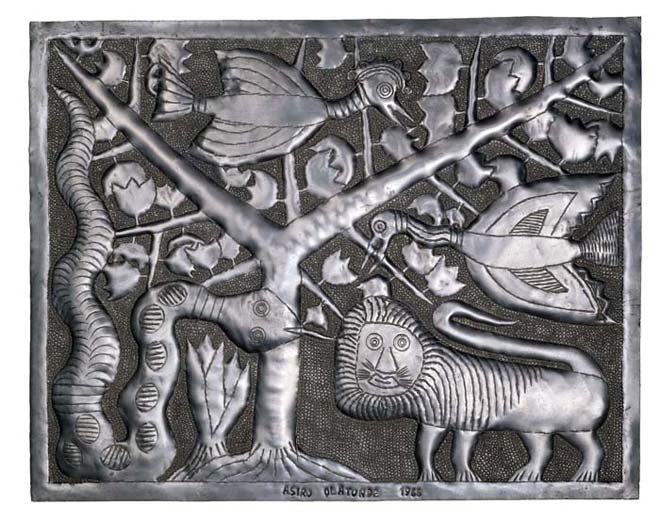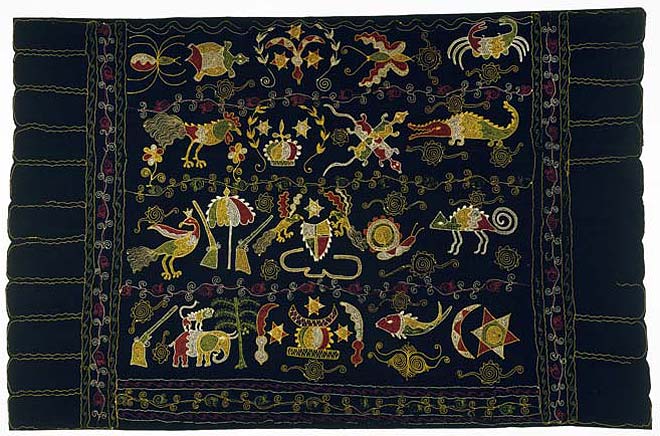
Asiru Olatunde
1918-1993, Oshogbo, Nigeria
Untitled
1966
Aluminum
Gift of Bernice M. Kelly, 95-7-1
Olatunde depicts lions-an uncommon motif in Yoruba art-in his panels and freestanding sculptures. The artist probably appropriated the motif from British colonial heraldic images and from sculptures found on Afro-Brazilian style architecture introduced to Yoruba land by returning freed slaves. 
Man's wrapper or "cloth of the great"
Fante peoples, Ghana
Mid- to late 20th century
Mill-woven wool, embroidery thread
Museum purchase, 84-6-10
For centuries, Akan paramount chiefs and wealthy family heads have acquired and worn locally woven and imported cloth, literally enveloping themselves in wealth. The "cloth of the great" (akunintam) was worn primarily by important men from various southern Akan groups. These wrappers, resplendent with colorful embroidered motifs, were symbols of wealth, power and leadership.
This wrapper is a prime example of such a cloth. It was probably produced after 1957 because it depicts the national coat of arms--a shield flanked by birds--adopted by Ghana at independence.
|



